Ancient Near East and Genesis - Lesson 2
Mike Ervin
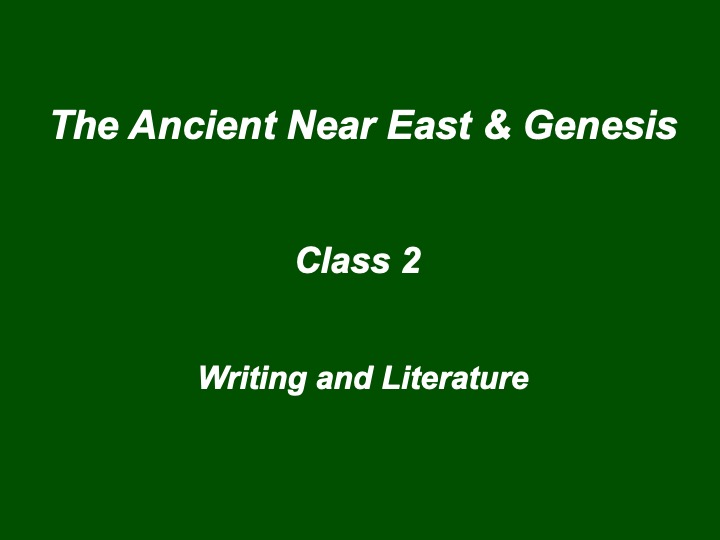
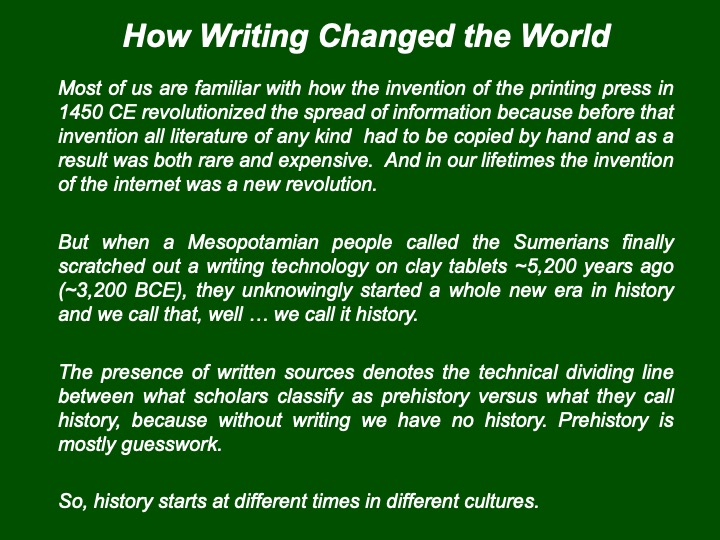
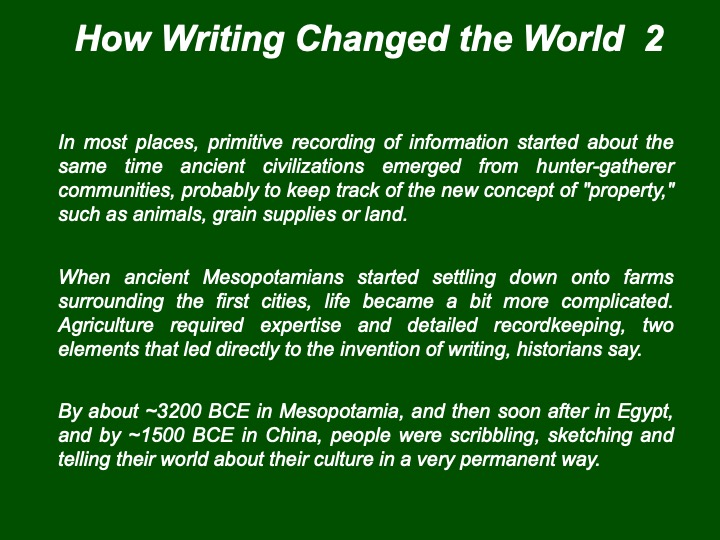
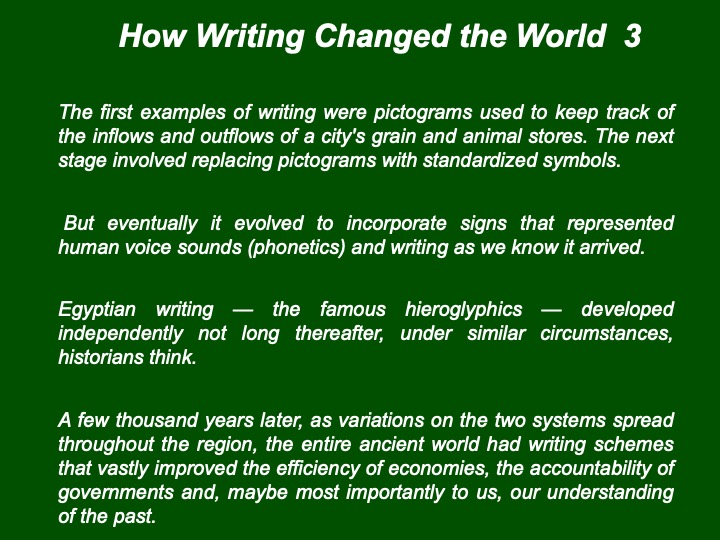
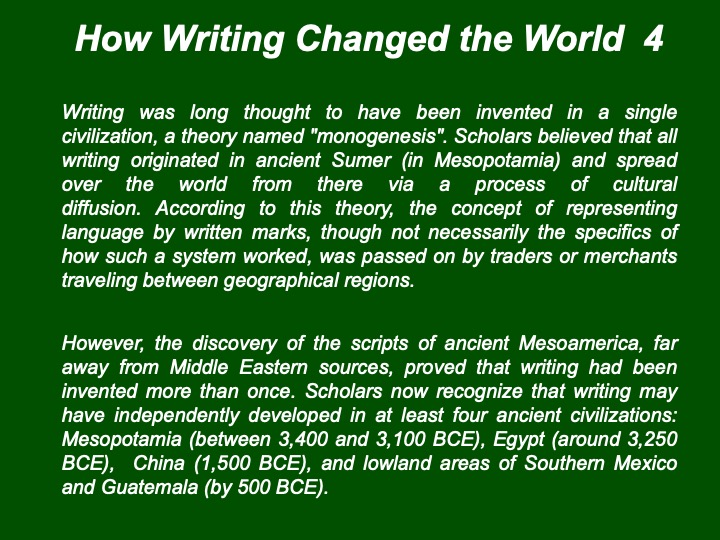
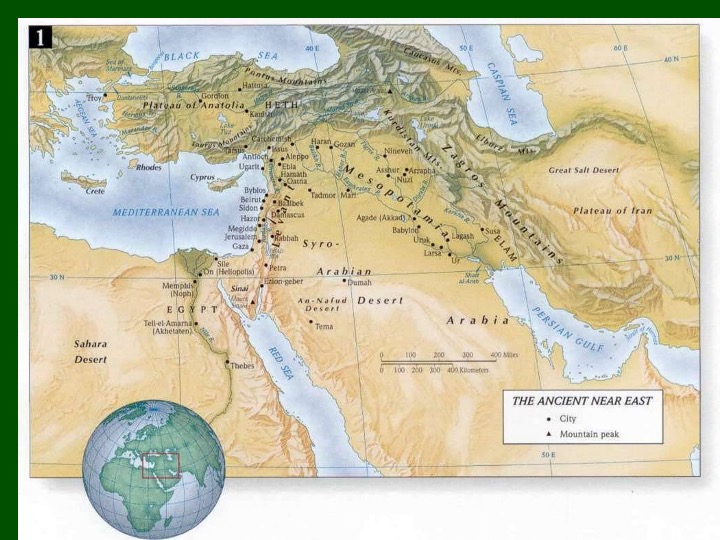
The Ancient Near East
The Ancient Near East is divided into three major geographical regions: Egypt, to the west, Canaan, in the middle, and Mesopotamia, to the east. All of these are important for understanding the Bible in general and the book of Genesis in particular. Why do I say that? Consider this.
The key patriarchs discussed in Genesis are Abraham, his grandson Jacob, and Jacob’s son Joseph. Abraham is born in Mesopotamia, in fact the bible records that he did not leave Mesopotamia until he was 70 years ago. So he was completely immersed in Mesopotamian culture in his formative years. He then migrated to the land of Canaan, and spent time in Egypt during a period of famine. His grandson Jacob is born in Canaan, but fled back home to Mesopotamia for 20 years, then returned to Canaan and then spends the end of his life in Egypt, where he eventually dies. His son Joseph is born in Mesopotamia, moves to Canaan with his family at a young age, but then spends his entire adult life in Egypt, where he dies.
So Genesis is a veritable travel tour of the ancient near east.
"Near East" is the term scholars use to refer to the area where Asia, Africa, and to some extent Europe all come together.
Ancient refers to the period from c. 3000 B.C., when our written records first begin, though 333 B.C., at which point we move to the Greco-Roman period, also called late antiquity.
The three main geographical regions of the ancient Near East are as follows:
Egypt, that is, the Nile valley, home of the Egyptians, contained mainly a homogeneous population.
Mesopotamia, that is, the Tigris and Euphrates valley, contained, in contrast to Egypt, a very heterogeneous population: it was the home of the Sumerians, Babylonians, Assyrians, Hurrians, and others.
Canaan, the land in between the two great powers listed above, in which lived the Canaanites and the Israelites, might be called "the third world" of ancient times. Canaan has rather amorphous boundaries; basically, we define it as the area bounded by the shore of the Mediterranean to the west and the Syrian Desert to the east.
There are three regions beyond the main Near East that have a role to play in biblical history: Persia (modern Iran), Greece, and Arabia.
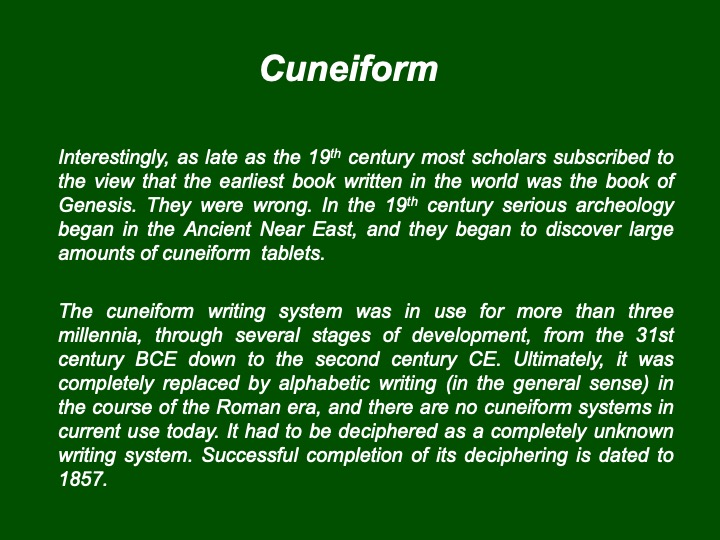
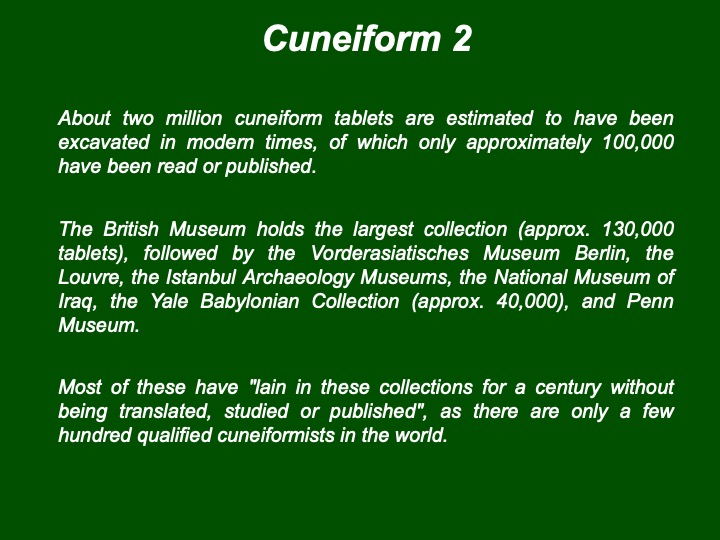
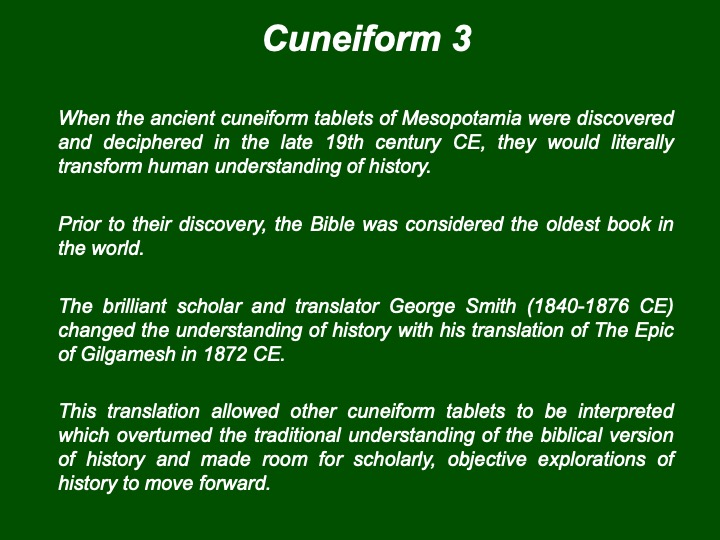
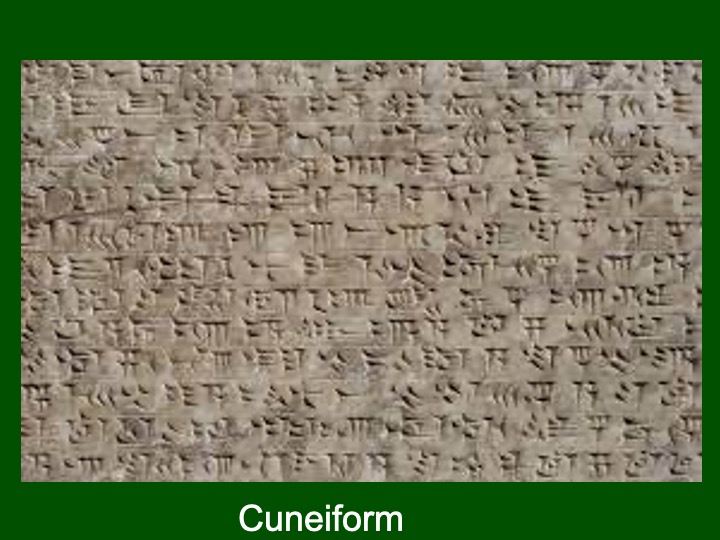
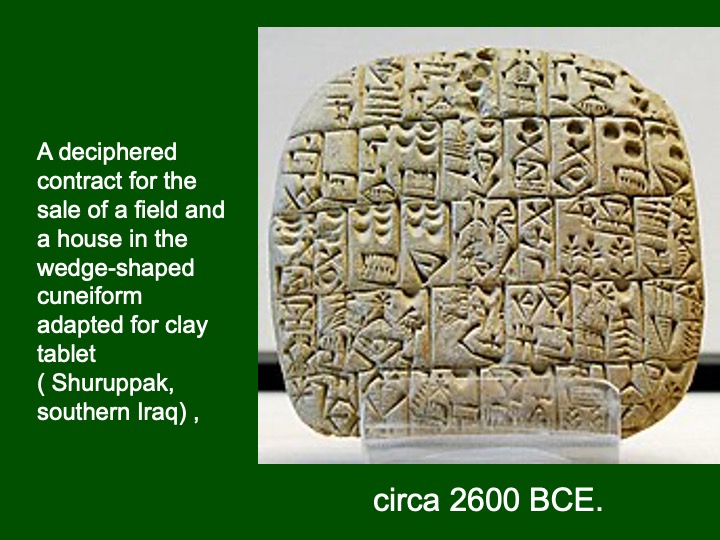
A Contract for a Sale
A deciphered contract for the sale of a field and a house in the wedge-shaped cuneiform adapted for clay tablet ( Shuruppak, southern Iraq) , circa 2600 BCE.
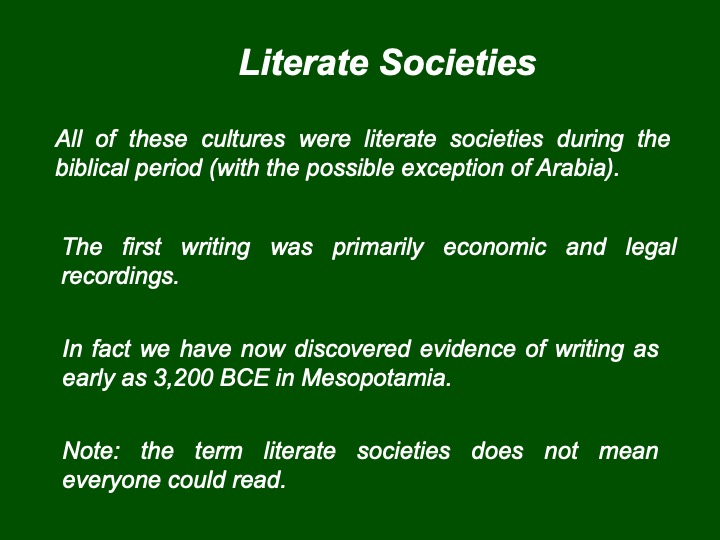
Literate Societies
It is important to note that all of these cultures were literate societies during the biblical period (with the possible exception of Arabia). Moreover, their literary remains often share striking similarities with the Bible, as we have seen already and as we will continue to demonstrate as the course unfolds. Many scholars believe that the ancient near east was the first literate society.
By the way – literate does not mean everyone could read – only a few select could read or write anything. And the earliest writing was not literature as we are talking about it – it was primarily economic recordings and later legal recordings.
Let’s talk about why writing probably developed first in Mesopotamia and Egypt.
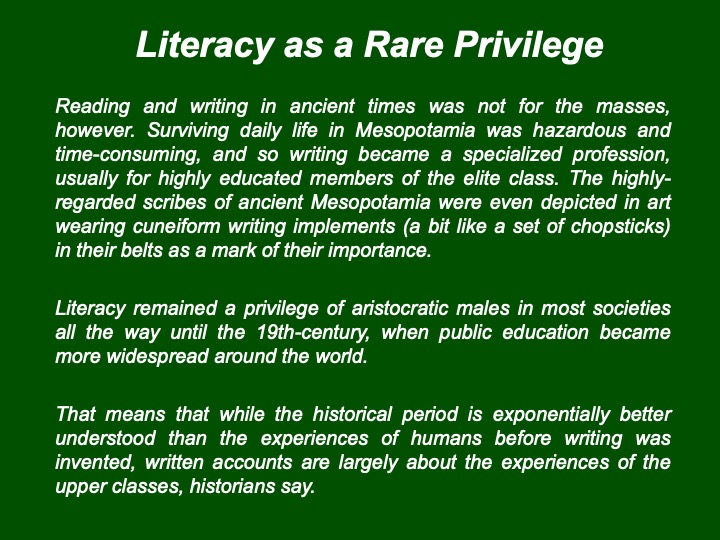
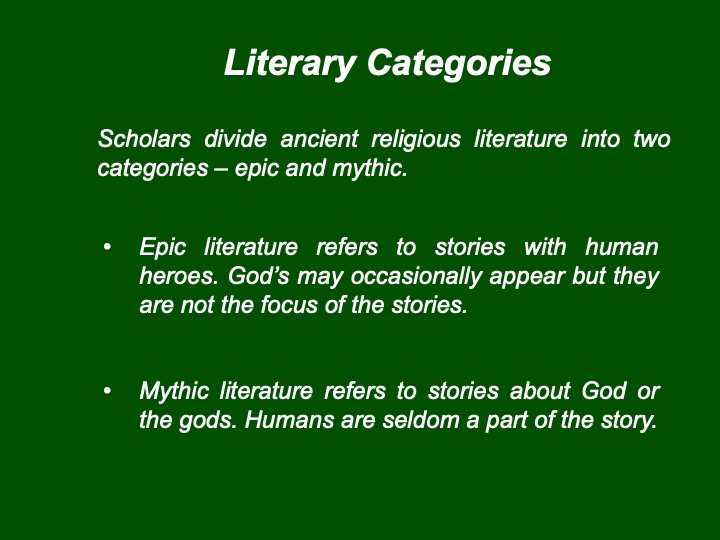
Literary Categories
So before we briefly review some of the literature of the ancient near east let’s first define some literary categories.
It is important to understand what these mean – because outside of the world of scholars modernistic thinking misunderstands these terms.
Epic literature refers to stories with human heroes. God’s may occasionally appear but they are not the focus of the stories.
Mythic literature refers to stories about God or the gods. Humans are seldom a part of the story.
By this type of lumping Genesis 1-11 is considered more mythic in character because God plays a major role. The remainder of Genesis 12-50 is more epic in character. God occasionally intervenes but the stories are very human. They are all about the family of Abraham and their evolution.
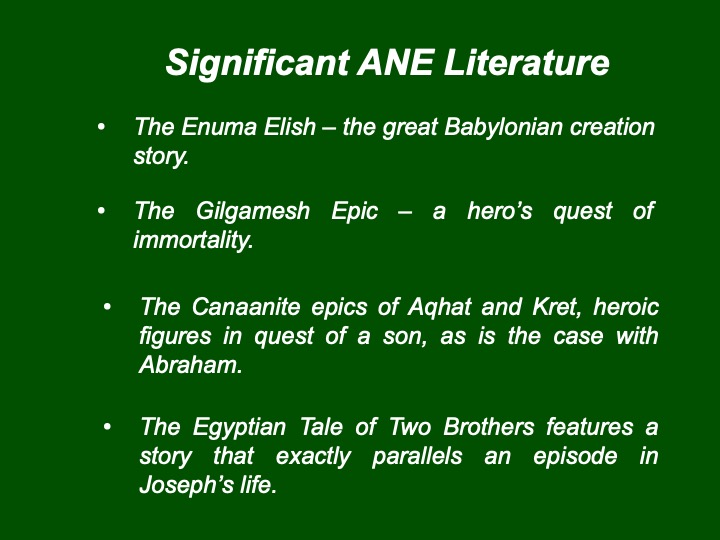
Significant ANE Literature
So let’s talk about the major, known ancient near east literature works. And I have to emphasize known because almost assuredly we have only recovered a small fraction of the literature of that time and place.
First is the Enuma Elish – the great Babylonian creation story of the creation of the universe. We will talk about it in a minute in order to understand what it was and how it was significantly different than for example the first chapter of Genesis. But is important to understand because it pre-dated the writing of Genesis and almost certainly the writer of Genesis knew it thoroughly since the patriarchs were from Mesopotamia.
The Gilgamesh Epic – not a religious work but in the classic definition of an epic it is about a human hero – an ancient King named Gilgamesh and his quest for immortality.
In the land of Canaan we find the Canaanite epics of Aqhat and of Kret – again heroic figures both on a quest for a son, and that is a motif of the Abraham story we will read.
Finally – one last example, but their could be more – from Egypt we have the Tale of Two Brothers – another epic. But containing a story with an exact parallel to a story in Joseph’s life.
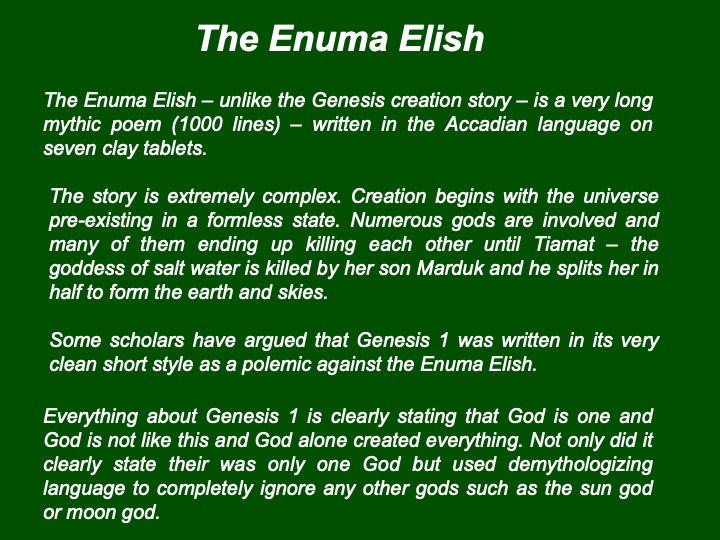
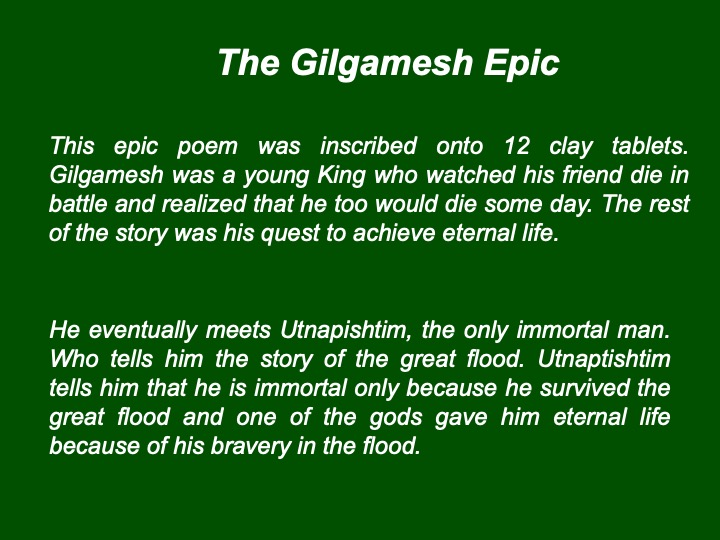
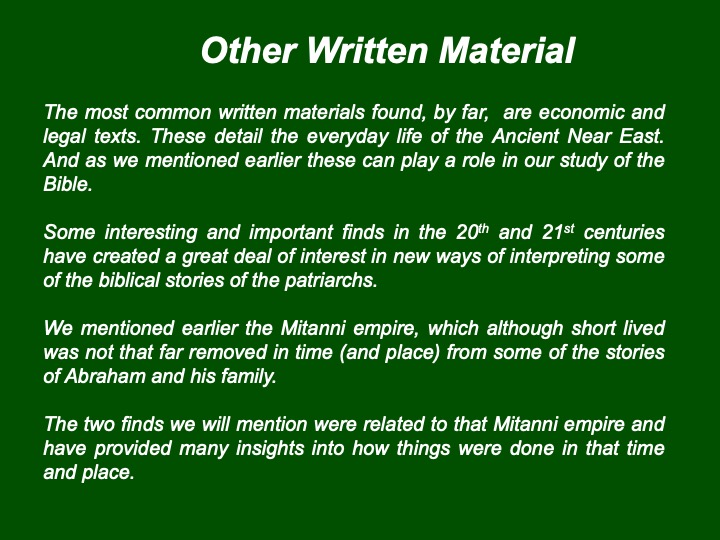
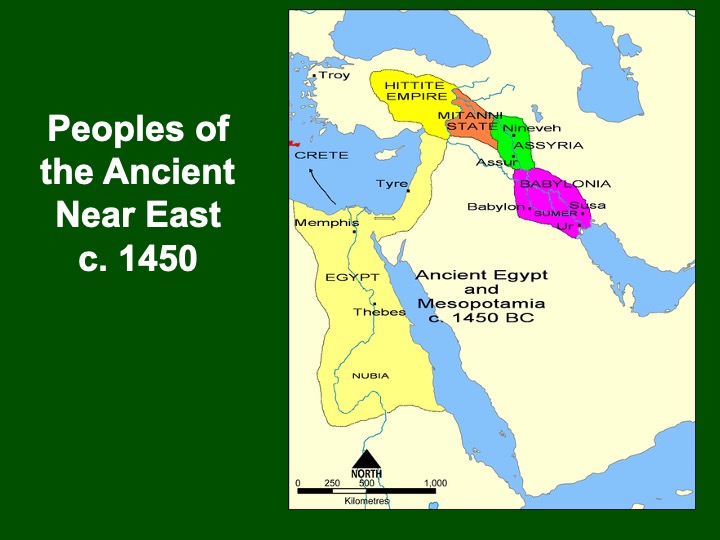
Peoples of the Ancient Near East
Before we move into the next discussion let’s take a look at a map we used last week. Notice the Mitanni state. Most Christians have never heard of the Mitanni state and in fact it is the state that we knew the least about (until very recently). But it is under great study right now due to some recent discoveries.
We are going to talk about those next. The two big discoveries that we will discuss next were in thei Mitanni state.
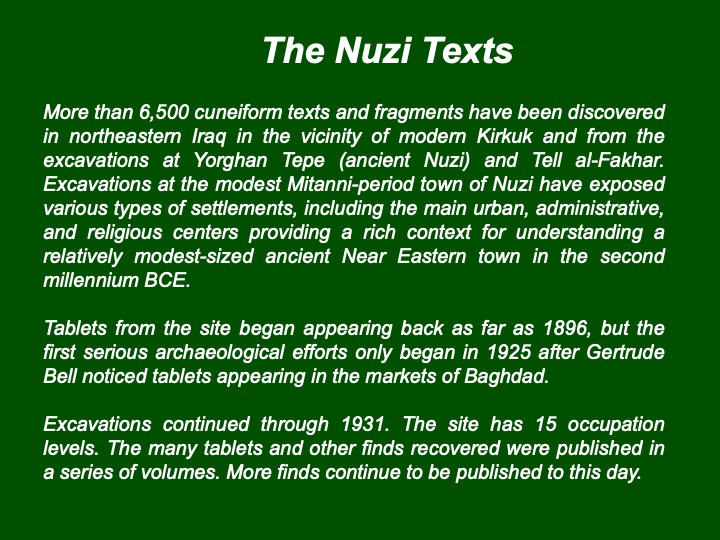
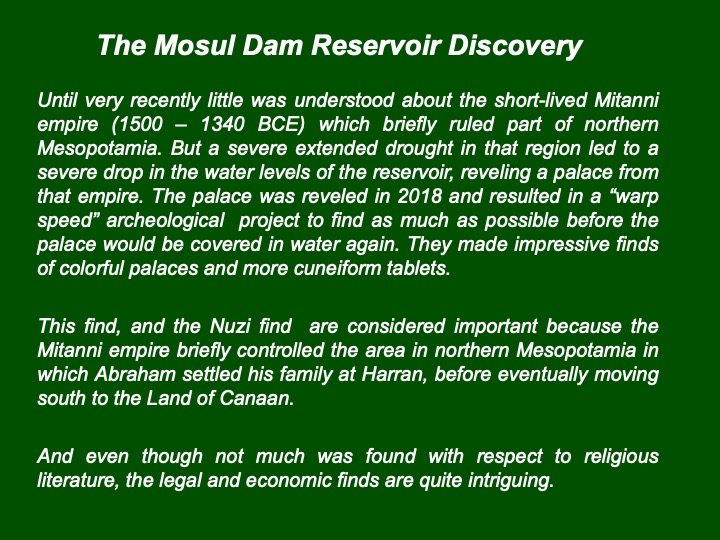
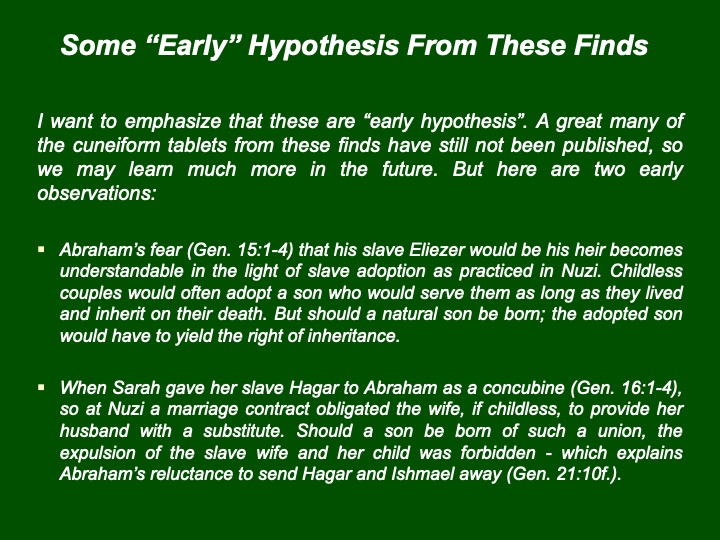
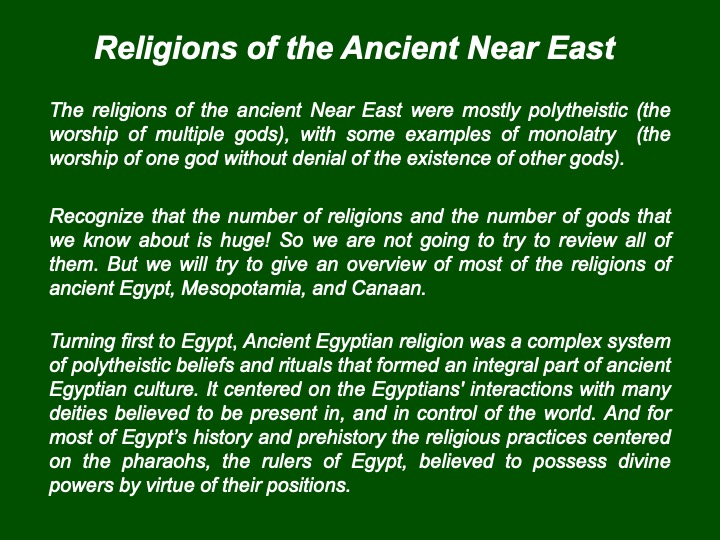
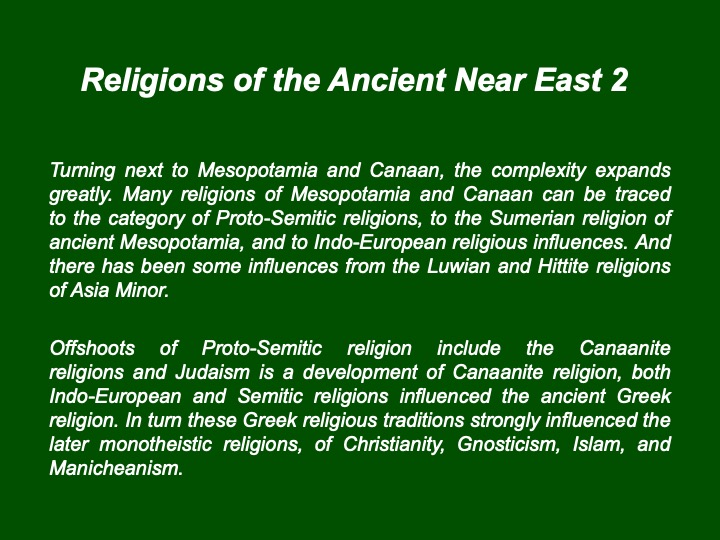
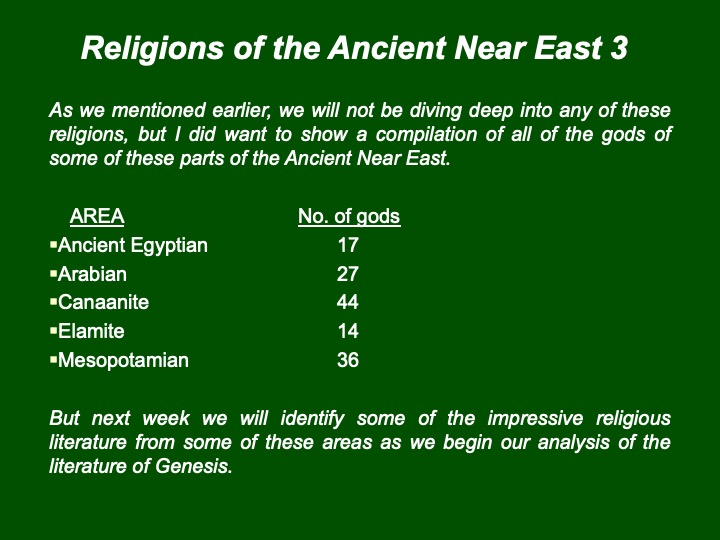
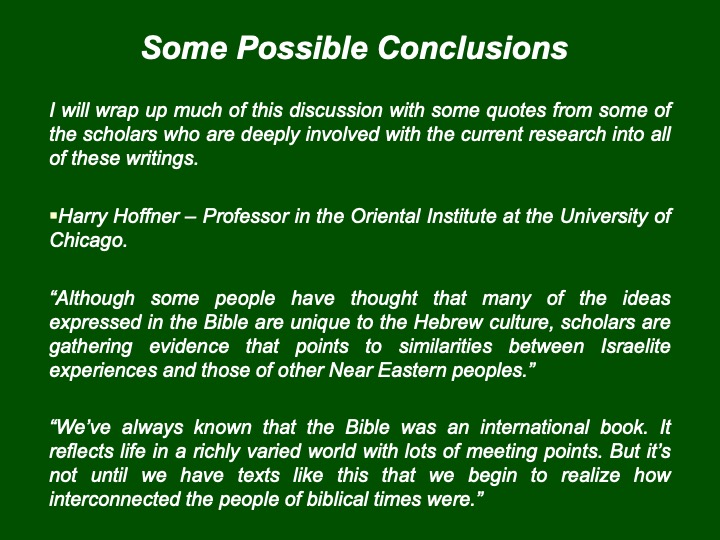
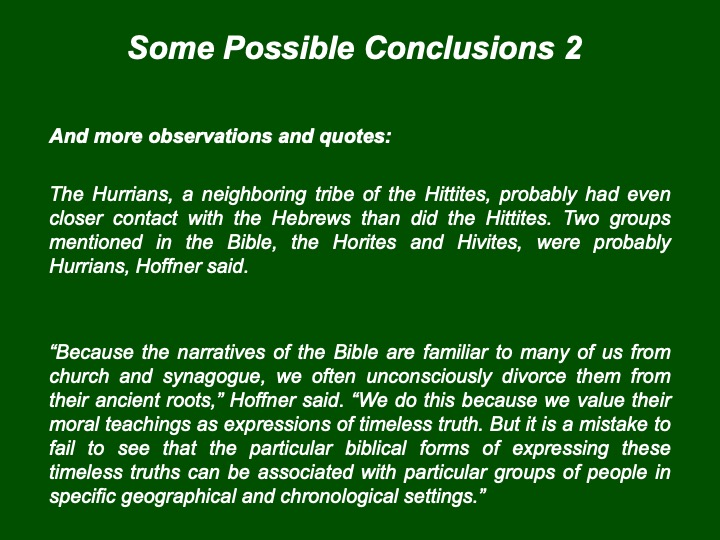
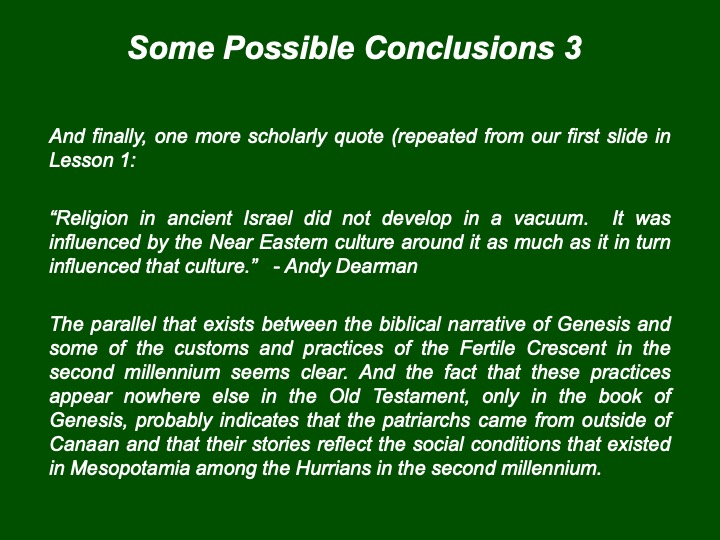
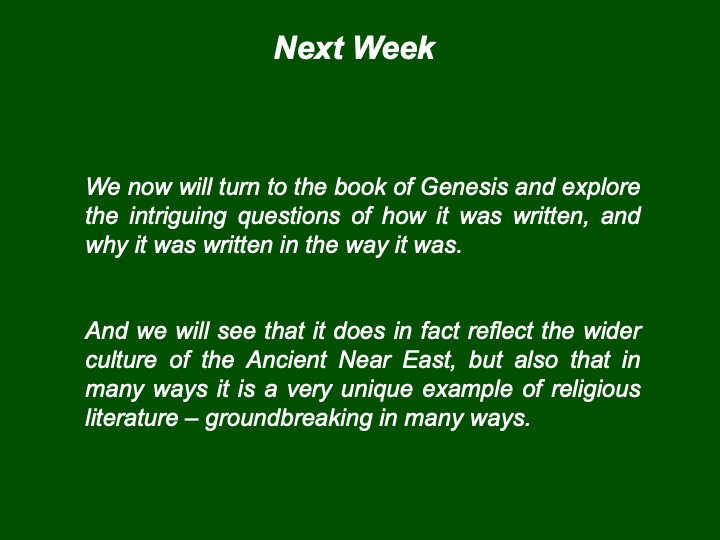
The Ancient Near East and Genesis - Lesson 2
Links
< Home Page> < Ancient Near East and Genesis Menu > < Top of Page >
The Ancient Near East and Genesis - Lesson 2 - the Text
Ancient Near East and Genesis 2
How Writing Changed the World
Most of us are familiar with how the invention of the printing press in 1450 CE revolutionized the spread of information because before that invention all literature of any kind had to be copied by hand and as a result was both rare and expensive. And in our lifetimes the invention of the internet was a new revolution.
But when a Mesopotamian people called the Sumerians finally did scratch out a writing technology on clay tablets ~5,200 years ago (~3200 BCE), they unknowingly started a whole new era in history we call, well … history.
The presence of written sources denotes the technical dividing line between what scholars classify as prehistory versus what they call history, which starts at different times depending on what part of the world you're studying. Prehistory is mostly guesswork.
How Writing Changed the World
In most places, primitive recording of information started about the same time ancient civilizations emerged from hunter-gatherer communities, probably as a way to keep track of the new concept of "property," such as animals, grain supplies or land.
When ancient Mesopotamians started settling down onto farms surrounding the first cities, life became a bit more complicated. Agriculture required expertise and detailed recordkeeping, two elements that led directly to the invention of writing, historians say.
By about ~3200 B.C. in Mesopotamia (present-day Iraq), and then soon after in Egypt, and by 1500 B.C. in China, people were scribbling, sketching and telling their world about their culture in a very permanent way.
How Writing Changed the World
The first examples of writing were pictograms used to keep track of the inflows and outflows of a city's grain and animal stores. The next stage involved replacing pictograms with standardized symbols.
But eventually it evolved to incorporate signs that represented human voice sounds and supposedly they were were taking notes, making to – do- lists and presumably writing love letters.
Egyptian writing — the famous hieroglyphics — developed independently not long thereafter, under similar circumstances, historians think.
A few thousand years later, as variations on the two systems spread throughout the region, the entire ancient world had writing schemes that vastly improved the efficiency of economies, the accountability of governments and, maybe most importantly to us, our understanding of the past.
How Writing Changed the World 4
Writing was long thought to have been invented in a single civilization, a theory named "monogenesis". Scholars believed that all writing originated in ancient Sumer (in Mesopotamia) and spread over the world from there via a process of cultural diffusion. According to this theory, the concept of representing language by written marks, though not necessarily the specifics of how such a system worked, was passed on by traders or merchants traveling between geographical regions.
However, the discovery of the scripts of ancient Mesoamerica, far away from Middle Eastern sources, proved that writing had been invented more than once. Scholars now recognize that writing may have independently developed in at least four ancient civilizations: Mesopotamia (between 3,400 and 3,100 BCE), Egypt (around 3,250 BCE), China (1,500 BCE), and lowland areas of Southern Mexico and Guatemala (by 500 BCE).
Cuneiform
Interestingly, as late as the 19th century most scholars subscribed to the view that the earliest book written in the world was the book of Genesis. They were wrong. On fact quite wrong. In the late 19th century serious archeology began in the Ancient Near East, and they began to discover large amounts of cuneiform tablets.
The cuneiform writing system was in use for more than three millennia, through several stages of development, from the 31st century BC down to the second century AD. Ultimately, it was completely replaced by alphabetic writing (in the general sense) in the course of the Roman era, and there are no cuneiform systems in current use today. It had to be deciphered as a completely unknown writing system. Successful completion of its deciphering is dated to 1857.
Cuneiform
About two million cuneiform tablets are estimated to have been excavated in modern times, of which only approximately 100,000 have been read or published.
The British Museum holds the largest collection (approx. 130,000 tablets), followed by the Vorderasiatisches Museum Berlin, the Louvre, the Istanbul Archaeology Museums, the National Museum of Iraq, the Yale Babylonian Collection (approx. 40,000), and Penn Museum.
Most of these have "lain in these collections for a century without being translated, studied or published", as there are only a few hundred qualified cuneiformists in the world.
Cuneiform
When the ancient cuneiform tablets of Mesopotamia were discovered and deciphered in the late 19th century CE, they would literally transform human understanding of history.
Prior to their discovery, the Bible was considered the oldest and most authoritative book in the world.
The brilliant scholar and translator George Smith (l.1840-1876 CE) changed the understanding of history with his translation of The Epic of Gilgamesh in 1872 CE.
This translation allowed other cuneiform tablets to be interpreted which overturned the traditional understanding of the biblical version of history and made room for scholarly, objective explorations of history to move forward.
Literacy as a Rare Privilege
Reading and writing in ancient times was not for the masses, however. Surviving daily life in Mesopotamia was time-consuming, and so writing became a specialized profession, usually for highly educated members of the elite class. The highly-regarded scribes of ancient Mesopotamia were even depicted in art wearing cuneiform writing implements (a bit like a set of chopsticks) in their belts as a mark of their importance.
Literacy remained a privilege of aristocratic males in most societies all the way until the 19th-century, when public education became more widespread around the world.
That means that while the historical period is exponentially better understood than the experiences of humans before writing was invented, written accounts are largely about the experiences of the upper classes, historians say.
The Enuma Elish
The Enuma Elish – unlike the Genesis creation story – is a very long mythic poem – written in the Accadian language on seven clay tablets.
The story is extremely complex. Numerous gods are involved and many of them ending up killing each other until Tiamat – the goddess of salt water is killed by her son Marduk and he splits her in half to form the earth and skies.
Some scholars have argued that Genesis 1 was written in its very clean short style as a polemic against the Enuma Elish.
The creation begins with the universe pre-existing in a formless state, from which emerge two primary gods – male and female.
The poem has about 1000 lines – written in the Accadian language on seven clay tablets. It was recited to the people of Babylon annually at their New Year festival.
Not exactly like Genesis 1.
Everything about Genesis 1 is clearly stating that God is one and God is not like this and God alone created everything. Not only did it clearly state their was only one God but used demythologizing language to completely ignore any other gods such as the sun god or moon god.
The Gilgamesh Epic
The epic was scribed onto 12 clay tablets. It may be the oldest surviving copy of ancient literature – believed to date from the 18th century B.C. Gilgamesh was a young King who watched his friend die in battle and realized that he too would die some day.
Utnaptishtim tells him that he is immortal ony because he survived the great flood and one of the gods gave him eternal life because of his bravery in the flood.
Because it includes the Babylon flood story we will review it when we read the flood story in Genesis 6-8.
Other Written Material
The most common written materials found, by far, are economic and legal texts. These detail the everyday life of the Ancient Near East. And as we mentioned earlier these can play a role in our study of the Bible.
Some interesting and important finds in the 20th and 21st centuries have created a great deal of interest in new ways of interpreting some of the biblical stories of the patriarchs.
We mentioned earlier the Mitanni empire, which although short lived was not that far removed in time from the story of Abraham and his family.
The two finds we will mention were related to that Mitanni empire and have provided many insights into how things were done in that time and place.
The Nuzi Texts
More than 6,500 cuneiform texts and fragments have been discovered in northeastern Iraq in the vicinity of modern Kirkuk and from the excavations at Yorghan Tepe (ancient Nuzi) and Tell al-Fakhar. Excavations at the modest Mitanni-period town of Nuzi have exposed various types of settlements, including the main urban, administrative, and religious centers providing a rich context for understanding a relatively modest-sized ancient Near Eastern town in the second millennium BCE.
Tablets from the site began appearing back as far as 1896, but the first serious archaeological efforts only began in 1925 after Gertrude Bell noticed tablets appearing in the markets of Baghdad.
Excavations continued through 1931. The site has 15 occupation levels. The many tablets and other finds recovered were published in a series of volumes. More finds continue to be published to this day.
The Mosul Dam Reservoir Discovery
Until very recently little was understood about the short-lived Mitanni empire (1500 – 1340 BCE) which briefly ruled part of northern Mesopotamia. But a severe extended drought in that region led to a severe drop in the water levels of the reservoir, reveling a palace from that empire. The palace was reveled in 2018 and resulted in a “warp speed” archeological project to find as much as possible before the palace would be covered in water again. They made impressive finds of colorful palaces and more cuneiform tablets.
This find, and the Nuzi find are considered important because the Mitanni empire briefly controlled the area in northern Mesopotamia in which Abraham settled his family at Harran, before eventually moving south to the Land of Canaan.
And even though not much was found with respect to religious literature, the legal and economic finds are quite intriguing.
Some “Early” Hypothesis From These Finds
I want to emphasize that these are “early hypothesis”. A great many of the cuneiform tablets from these finds have still not been published, so we may learn much more in the future. But here are some early observations:
Abraham’s fear (Gen. 15:1-4) that his slave Eliezer would be his heir becomes understandable in the light of slave adoption as practiced in Nuzi. Childless couples would adopt a son who would serve them as long as they lived and inherit on their death. But, should a natural son be born, the adopted son would have to yield the right of inheritance.
When Sarah gave her slave Hagar to Abraham as a concubine (Gen. 16:1-4), so at Nuzi a marriage contract obliged the wife, if childless, to provide her husband with a substitute. Should a son be born of such a union, the expulsion of the slave wife and her child was forbidden—which explains Abraham’s reluctance to send Hagar and Ishmael away (Gen. 21:10f.).
Religions of the Ancient Near East
The religions of the ancient Near East were mostly polytheistic (the worship of multiple gods), with some examples of monolatry (the worship of one god without denial of the existence of other gods.
Recognize that the number of religions and the number of gods that we know about is huge! So we are not going to try to review all of them. But we will try to give an overview of most of the religions of ancient Egypt, Mesopotamia, and Canaan.
Turning first to Egypt, Ancient Egyptian religion was a complex system of polytheistic beliefs and rituals that formed an integral part of ancient Egyptian culture. It centered on the Egyptians' interactions with many deities believed to be present in, and in control of the world. And for most of Egypt’s history and prehistory the religious practices centered on the pharaohs, the rulers of Egypt, believed to possess divine powers by virtue of their positions.
Religions of the Ancient Near East
Turning next to Mesopotamia and Canaan, the complexity expands greatly. Many religions of Mesopotamia and Canaan can be traced to the category of Proto-Semitic religions, to the Sumerian religion of ancient Mesopotamia, and to Indo-European religious influences. And there has been some influences from the Luwian and Hittite religions of Asia Minor.
Offshoots of Proto-Semitic religion include the Canaanite religions and Judaism is a development of Canaanite religion, both Indo-European and Semitic religions influenced the ancient Greek religion. In turn these Greek religious traditions strongly influenced the later monotheistic religions, of Christianity, Gnosticism, Islam, and Manicheanism.
Religions of the Ancient Near East 3
As we mentioned earlier, we will not be diving deep into any of these religions, but I did want to show a compilation of all of the gods of some of these parts of the Ancient Near East.
1. Ancient Egyptian 17
2. Arabian 27
3. Canaanite 44
4. Elamite 14
5. Mesopotamian 36
So we would have 138 gods to deal with. One wonders if there were many atheists with so much to choose from :-).
But next week we will identify some of the impressive religious literature from some of these areas as we begin our analysis of the literature of Genesis.
Some Possible Conclusions
I will wrap up much of this discussion with some quotes from some of the scholars who are deeply involved with the current research into all of these writings.
Harry Hoffner – Professor in the Oriental Institute at the University of Chicago. “Although some people have thought that many of the ideas expressed in the Bible are unique to the Hebrew culture, scholars are gathering evidence that points to similarities between Israelite experiences and those of other Near Eastern peoples.
“We’ve always known that the Bible was an international book. It reflects life in a richly varied world with lots of meeting points. But it’s not until we have texts like this that we begin to realize how interconnected the people of biblical times were.”
Some Possible Conclusions 2
And more observations and quotes:
The Hurrians, a neighboring tribe of the Hittites, probably had even closer contact with the Hebrews than did the Hittites, Hoffner said. Two groups mentioned in the Bible, the Horites and Hivites, were probably Hurrians, and Abdi-hepa, a Jebusite king who ruled Jerusalem three centuries before its conquest by Israel’s King David, had a Hurrian name, Hoffner said.
Given this connection, it is not surprising to find an echoing of ideas between the Scriptures and the texts of other peoples in the area, he said. They shared similar problems as well as similar values.
“Because the narratives of the Bible are familiar to many of us from church and synagogue, we often unconsciously divorce them from their ancient roots,” Hoffner said. “We do this because we value their moral teachings as expressions of timeless truth. But it is a mistake to fail to see that the particular biblical forms of expressing these timeless truths can be associated with particular groups of people in specific geographical and chronological settings.”
Some Possible Conclusions 3
And finally, one more scholarly quote (repeated from our first slide in Lesson 1:
“Religion in ancient Israel did not develop in a vacuum. It was influenced by the Near Eastern culture around it as much as it in turn influenced that culture.” Andy Dearman
The parallel that exists between the biblical narrative and some of the customs and practices of the Fertile Crescent in the second millennium does not provide a fixed date for the stories of the patriarchs. However, the fact that these practices appear nowhere else in the Old Testament, not even in the laws of the Pentateuch, indicates that the patriarchs came from outside of Canaan and that their stories reflect the social conditions that existed in Mesopotamia in the second millennium.
Next Week
We now will turn to the book of Genesis and explore the intriguing questions of how it was written, and why it was written in the way it was.
And we will see that it does in fact reflect the wider culture of the Ancient Near East, but also that in many ways it is a very unique example of religious literature – groundbreaking in many ways.